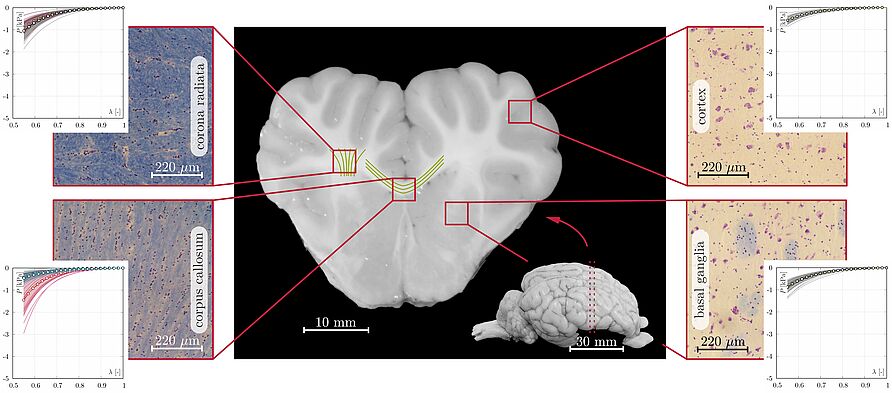The computational simulation of pathological conditions and surgical procedures, for example the removal of cancerous tissue, can contribute crucially to the future of medicine. Especially for brain surgery, these methods can be important, as the ultra-soft tissue controls vital functions of the body. However, the microstructural interactions and their effects on macroscopic material properties remain incompletely understood. Therefore, we investigated the mechanical behaviour of brain tissue under three different deformation modes, axial tension, compression, and semi-confined compression, in different anatomical regions, and for varying axon orientation. In addition, we characterised the underlying microstructure in terms of myelin, cells, glial cells and neuron area fraction, and density. The correlation of these quantities with the material parameters of the anisotropic Ogden model reveals a decrease in shear modulus with increasing myelin area fraction. Strikingly, the tensile shear modulus correlates positively with cell and neuronal area fraction (Spearman’s correlation coefficient of rs=0.40 and rs=0.33), whereas the compressive shear modulus decreases with increasing glial cell area (rs=−0.33). Our study finds that tissue non-linearity significantly depends on the myelin area fraction (rs=0.47), cell density (rs=0.41) and glial cell area (rs=0.49). Our results provide an important step towards understanding the micromechanical load transfer that leads to the non-linear macromechanical behaviour of the brain.
M. Hoppstädter, D. Püllmann, R. Seydewitz, E. Kuhl, M. Böl
Correlating the microstructural architecture and macrostructural behaviour of the brain
Acta Biomateriala, in press, (2022) [Link]

